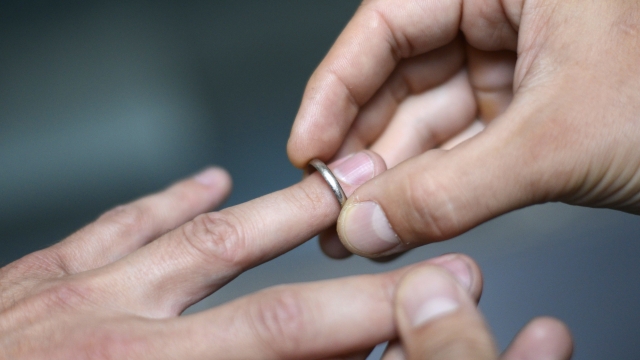The subject of what “counts” as sex is a very personal matter. If you ask a hundred different people, you’ll probably get at least 50 different answers (although this is purely speculation on my part; I’m not sure if it’s really as diverse on a worldwide level as the answers that I’ve personally received).
For many people, “real sex” means “penetrative sex with a man”. It’s often assumed that other sexual activities don’t put you at the same level of risk as this “real sex” puts you at – but the people who perpetuate this idea are putting others at a huge disservice.
Truthfully, any sexual activity does put you at risk of contracting an STD – even if it’s your first time. (STDs have nothing to do with promiscuity). There are even non-sexual activities that can put you at risk for these STDs. Wondering how that works? Well, in short, “STD” (or STI) is a blanket term that refers to any disease involving either the sexual organs or an exchange of bodily fluids. Different fluids can harbor different diseases, and safer sex practices can help lower your risk factors for certain diseases.
But we’ve got 10 reasons why safer sex isn’t enough all on its own – you should be getting tested regularly, even if you don’t think you’re at risk.
1. Pubic lice (crabs)
We often associate “having crabs” with sexually promiscuous behavior – but the name pubic lice is a bit misleading, in itself. While they are often found in the pubic hair, just shaving your pubes won’t magically make you immune to contracting – they can live in any coarse hair on the body. This means that any body hair – including facial hair – has the potential to hide these little critters.
While they’re mainly transmitted by sexual contact, they can be passed on by any skin-to-skin contact with areas close to where the lice are located, or by sharing clothing with someone suffering from an infestation. This is one of the many reasons it’s super important to always wash second-hand clothes in hot water before wearing them – even if you trust the person you got them from.
Thankfully, just like head lice, pubic lice can easily be treated with a special shampoo. Make sure the lotion, shampoo, or mousse you buy contains permethrin and/or piperonyl butoxide, so it’s sure to kill the lice and their eggs. If you’re embarrassed about purchasing special “pubic lice lotions”, don’t worry – they’re pretty much exactly the same as the lice shampoo you’ll find with the hair stuff.
2. Molluscum contagiosum
Never heard of this one? Don’t worry, you’re not alone. This is one of the less-known STDs, which in many ways is exactly why we should be looking into it more. Simply put, molluscum contagiosum refers to lesions caused by a poxvirus (meaning that it’s medically similar to chickenpox – and can be spread in the same ways).
Although this disease is classified as an STD, much like other varieties of poxes, they can be passed from any skin-to-skin contact. Generally, these lesions are located on the face, neck, arms, legs, stomach, and genital area. They often appear in groups, but can be isolated as well.
In most cases, treatment is considered unnecessary, as the symptoms (and the disease) will usually clear up within a year on their own. They can be removed, through laser therapy, cryotherapy, or cutterage. There are also oral and topical treatments that are usually limited to kids who come down with the infection. No matter which treatment you decide to pursue, you will need to make an appointment with your doctor (and, of course, limit physical contact with infected areas until the lesions are gone).
3. Herpes
Okay, I think we all know about herpes and what it basically means, but I think there are still a lot of people who still don’t know exactly what the diagnosis of herpes really means. This is an infection that isn’t really “dangerous” in most situations, per se, but it’s definitely going to be awkward – for the rest of your life. There is no cure for herpes, and in pregnant women, it may have a connection with miscarriage and premature birth rates.
Herpes is super common – about 1/6 of Americans between the ages of 14 and 49 have herpes. The most obvious method of transmission is contact with a herpes outbreak – but most people don’t know that you can get herpes from an infected partner, even if they’re not currently showing symptoms.
Treatment options for herpes are growing, and while you will never “get rid of” the herpes virus, there are treatments which shorten the length of outbreak, as well as ones that make transmission less likely. It’s still absolutely essential to not have sex while suffering from any symptoms – but also, it’s important that you use the proper barrier methods, and using them correctly, even when there are no signs of symptoms.
4. HPV (human papillomavirus)
HPV has been getting a bit of media attention lately, which is amazing – I am all on board with people becoming more educated about their bodies and the things that could potentially go wrong with it. HPV is the most common sexually transmitted disease, and according to the CDC, almost all sexually active men and women will have HPV at some point in their life – although there are a number of different strains that should be noted, too.
Human papillomavirus can be spread through skin contact or oral-genital contact, which – it should go without saying – pretty much includes any type of sexual activity. If left untreated, certain strains of HPV can cause cancer or genital warts, as well as other notable medical problems.
Thankfully, like most other high-visibility STDs, there are preventative measures available to keep you a little bit safer. The HPV vaccine is highly recommended, as it helps to protect you from the strain(s) of HPV that can turn into cervical cancer. For those who contract the disease, whether they chose not to get vaccinated or the vaccine didn’t “take”, we recommend speaking with your doctor to evaluate your treatment options.
5. Chlamydia
I’ll admit – I knew nothing about chlamydia until I was accused of passing it on to a non-monogamous partner. Turns out, I didn’t have it – but I did learn that my initial knee-jerk reaction of “I think I’d know if I had an STD” were completely unfounded. Chlamydia is often asymptomatic in women, but it can cause some major long-term (and even permanent) damage to the reproductive system – making it difficult or even impossible to conceive and carry a child later in life.
Chlamydia is passed on by oral, vaginal, or rectal sex, and both men and women can be carriers of the disease (again, potentially without any symptoms). When symptoms do exist, they can include abnormal discharge (in both men and women), pain and swelling of the testicles (in men – but this symptom is rare), and a burning when urinating.
If you do find out that you have chlamydia, it’s not necessarily a big deal, as long as you’re regularly tested and catch it before it causes any further problems. It’s treated with a round of antibiotics, which must be obtained from your doctor.
6. Gonorrhea
Gonorrhea is most commonly associated with oral sex, although it can be passed on through other methods as well. The symptoms most often show themselves as a sore throat or other “head cold”-like symptoms, and it is highly contagious. Although most people have a passing familiarity with gonorrhea, it remains one of the most prevalent sexually transmitted diseases – especially in younger sexually active people, from 15-24 years old.
While it’s usually noted as an “oral sex disease”, it can be passed on from oral-genital contact, oral-rectal contact, rectal-penile contact, and penile-vaginal contact. Many people with gonorrhea have no symptoms, and when the symptoms are present, they are often mistaken for other diseases (such as a bladder infection or the flu).
There are a number of treatment options for gonorrhea, but many strains of the virus have developed a resistance to antibiotics. For this reason, doctors recommend dual-treatment – and diligent re-testing to ensure that the first round of treatment actually got rid of the infection.
7. Syphilis
The idea of syphilis is especially scary – I know I’ve heard of a lot of famous historical figures who actually had the disease, and some who actually died from it. Thankfully, our understanding of the disease has grown a lot over the past few centuries, and although syphilis can still cause serious complications if left untreated, it’s not automatically a death sentence anymore.
The physical symptoms of syphilis are separated into stages, as each stage has certain symptoms characteristic to the timeframe. It’s also been called “the great imitator” because most of the symptoms associated with the disease mimic the symptoms of other problems – such as a rash or lesions on your body, or eventual deterioration of your muscle control. Contact with a syphilis outbreak can spread the infection to another person, or another part of the body.
Treatment of syphilis is necessary, even though most people don’t progress to the stage that can cause serious problems – the risk is still there, and you are still highly contagious. It’s more likely to pass the disease on to someone else if you’re still in those early, relatively painless stages. It’s important to get treated early, as the disease can be cured, but there is no way to reverse the complications it has already caused.
8. Hepatitis B
HBV is a disease with a number of different variables. It can be life-long or short-term. It can be contracted from oral-genital contact, as well as many other “risky behaviors”. It causes major damage to the liver, and if you happen to contract a longer-term illness, you’re pretty much stuck with hepatitis.
Most Americans will be vaccinated against Hepatitis B (and a few other variants) before they enter school. This is generally considered the best way to keep yourself safe – a vaccination will remove almost all of the risk of contraction, but it’s still a good idea to use safer sex practices even if you have been vaccinated.
Treatment options for HBV will vary, depending on the specific strain you have. If you have one of the “more temporary” forms of the virus, there are only supportive treatments available. For those with a long-term infection, it may be necessary to treat with antiviral medications.
9. Hepatitis C
HCV is actually pretty similar to HBV, but a much higher percentage of people contract a chronic form of this disease – an estimated 70-85% of those infected. This disease is no laughing matter, and even in the modern age of medical technology, people still die from complications of their hepatitis C symptoms.
Unlike Hepatitis B, Hep-C is most commonly not caused by sexual contact – the large majority of infections come from drug injection (with shared needles). That doesn’t mean that sexual activity doesn’t put you at risk, though – it can also be passed on through oral-genital contact, as well as penetrative sex.
Chronic Hepatitis C is treated with antiviral drugs. In 2013, two new drugs were approved for the treatment of HCV: Sofosbuvir (brand-name Sovaldi) and Simeprevir (brand-name Olysio). These drugs will not get rid of the disease, though – they’ll only manage the symptoms in order to allow you a normal life.
10. HIV
As the most highly-visible of all sexually transmitted diseases, it’s the one that most people know the most about. Still, that knowledge is likely to be limited – and, because of these limitations, it’s highly possible that you’re not adequately protecting yourself. Up until very recently, it was assumed that HIV was only spread through anal sex, and primarily affecting the gay male community. Let me tell you right now: No one is immune to HIV.
HIV is passed through the spread of certain bodily fluids, such as semen, vaginal discharge, or blood. This means that any contact with any of these substances will put you at risk. Further, you can still test negative for HIV for several months after exposure – making it absolutely necessary to get tested regularly, even if you’re completely monogamous.
Unfortunately, there is no effective cure for HIV, and many of the treatment options leave a lot of room to be desired. With proper (and early) treatment, the prognosis is getting a lot brighter, but there’s still a long way to go – so, if at all possible (and it is possible), you should protect yourself from contracting the virus in the first place.










3 thoughts on “10 STDs You Can Get Without Having “Real Sex””
I know yr young but this is super youth centric and misses some important info.
Hi Colette! I did my best to include a lot of information here, but really the subject of STDs is so diverse that I am still learning a lot myself. If there is more information you think should have been included, please let us know what it is!
Pingback: 10 Bullsh*t Things Lesbians Hear All The Damn Time | KitschMix